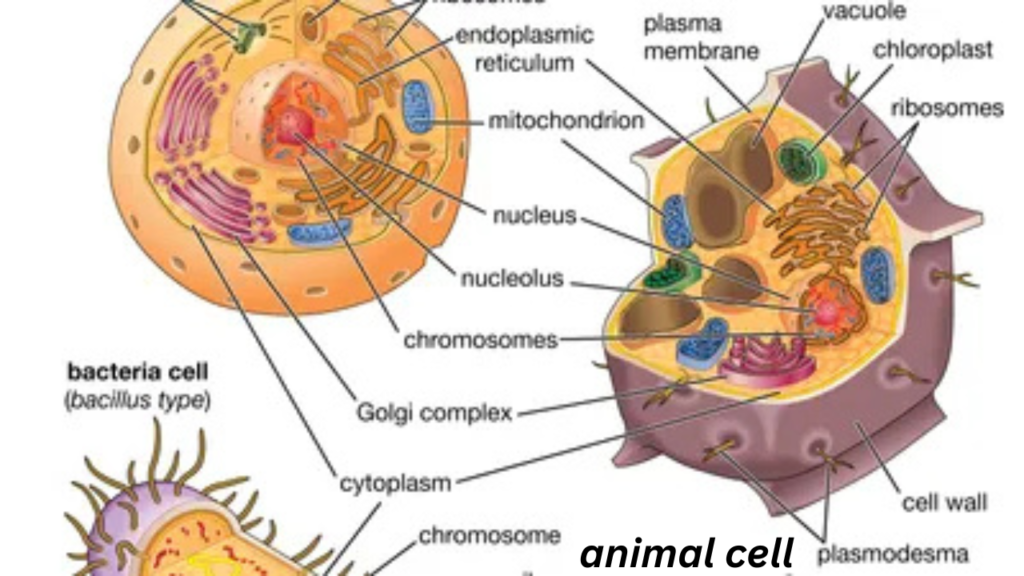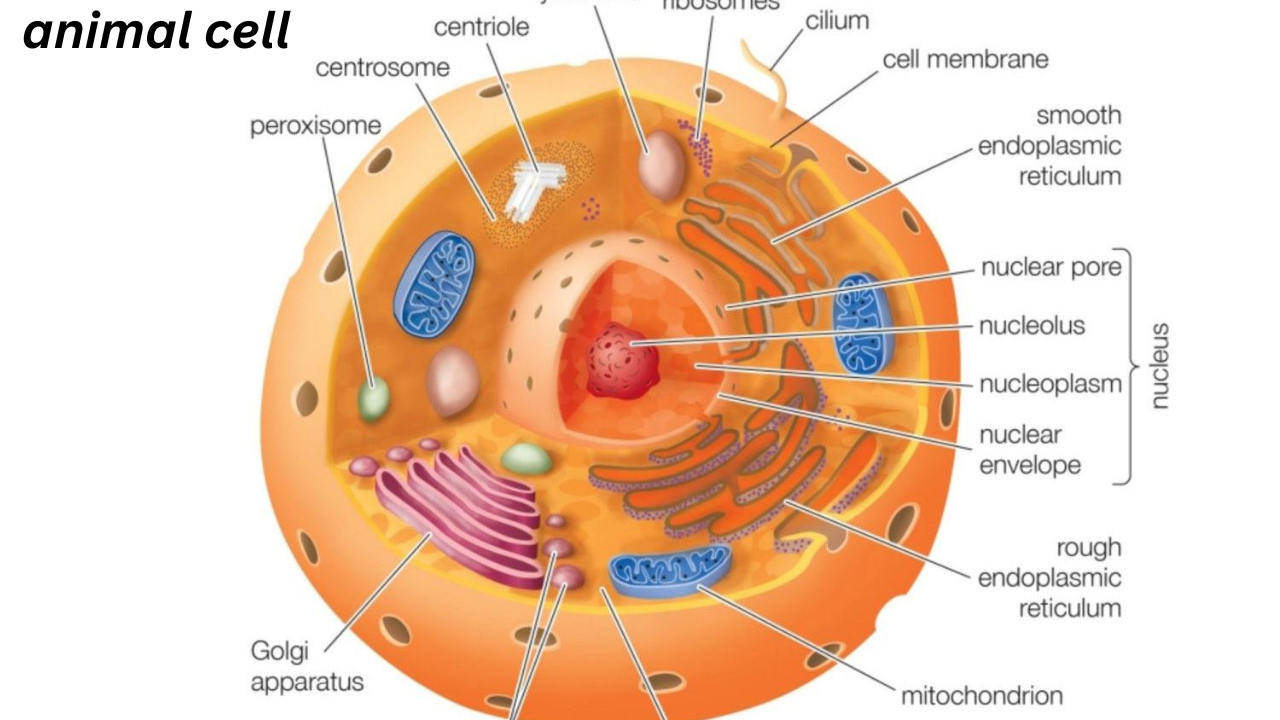Introduction
Animal cell are the building blocks of life in all members of the animal kingdom, from the smallest insect to the largest mammal. These microscopic units are highly organized and incredibly dynamic, housing various specialized structures known as organelles, each performing essential tasks that sustain life. Unlike plant cells, animal cell lack a cell wall and chloroplasts, making them more flexible and specialized for movement and interaction with their environment.
Understanding the structure and function of animal cells is crucial not only for biology students but also for medical and biotechnology professionals. These cells form the foundation for everything from tissue regeneration and genetic research to cancer treatment and drug development. By exploring the intricate components of the animal cell, we gain valuable insights into how our bodies work at a cellular level.
This article dives deep into the structural organization, biological functions, and scientific relevance of animal cells. It covers everything from the roles of individual organelles to their collective participation in the cell cycle and modern applications in research. Whether you’re a curious learner or a budding scientist, this comprehensive guide will help illuminate the fascinating world within each animal cell.
Structure of an Animal Cell
At first glance under a microscope, an animal cell may appear simple. However, it’s a complex and highly coordinated unit composed of several organelles, each with distinct roles. The outermost boundary of the animal cell is the cell membrane, a semi-permeable phospholipid bilayer that regulates what enters and exits the cell. It maintains homeostasis and acts like a gatekeeper, allowing essential nutrients in while keeping harmful substances out.
Inside the membrane lies the cytoplasm, a jelly-like fluid that holds all the organelles in place and serves as the site for many biochemical reactions. Floating within the cytoplasm are structures like the nucleus, the control center of the cell. It is encased in a nuclear envelope and contains DNA, the blueprint of life. The nucleolus inside the nucleus is responsible for producing ribosomes, which are essential for protein synthesis.
Another vital organelle is the mitochondrion, often referred to as the powerhouse of the cell. Mitochondria generate adenosine triphosphate (ATP), the cell’s energy currency, through a process called cellular respiration. Ribosomes, whether free-floating or attached to the endoplasmic reticulum (ER), produce proteins by translating genetic instructions. The rough ER is studded with ribosomes and synthesizes proteins, while the smooth ER is involved in lipid production and detoxification.
The Golgi apparatus modifies, packages, and ships proteins and lipids throughout the cell. Lysosomes break down waste materials and cellular debris, while peroxisomes help detoxify harmful substances. Supporting all these functions is the cytoskeleton, a network of fibers that provides shape, movement, and structural support. Finally, centrosomes and centrioles play a key role in organizing microtubules during cell division.
Functions of Animal Cell Organelles

Each organelle in an animal cell plays a distinct yet interconnected role, forming a tightly regulated system that ensures cell survival and function. These organelles don’t work in isolation—they collaborate in an intricate dance of chemical reactions and structural support. For example, the nucleus sends genetic instructions to ribosomes via messenger RNA, which the ribosomes then use to synthesize proteins. These proteins are often transported to the rough ER and later processed by the Golgi apparatus for delivery.
The mitochondria ensure that the cell has a continuous supply of energy. Without ATP, none of the cellular processes could occur. Similarly, the lysosomes and peroxisomes serve as waste management units. Lysosomes use enzymes to digest excess or worn-out organelles and invaders like bacteria, while peroxisomes break down fatty acids and neutralize toxins like hydrogen peroxide.
The cytoskeleton deserves special mention for its role in maintaining the cell’s shape, enabling cellular movement, and facilitating intracellular transport. It’s composed of microfilaments, microtubules, and intermediate filaments that support cellular infrastructure and movement. These filaments also help transport organelles and vesicles to different parts of the cell.
Moreover, the cell membrane not only protects the internal environment but also plays a pivotal role in cell communication. Through receptor proteins embedded in the membrane, animal cells can send and receive signals, allowing them to respond to external stimuli and coordinate with other cells.
Animal Cell Cycle and Division
One of the most fascinating aspects of an animal cell is its ability to replicate and grow through the cell cycle. This cycle ensures that cells grow, duplicate their DNA, and divide accurately to produce two daughter cells. The cycle has four main phases: G1 (cell growth), S (DNA synthesis), G2 (preparation for mitosis), and M (mitosis).
During mitosis, the nucleus divides in a series of steps—prophase, metaphase, anaphase, and telophase—followed by cytokinesis, where the cytoplasm splits, forming two genetically identical cells. This process is vital for growth, tissue repair, and replacing old or damaged cells.
Equally important is the process of apoptosis, or programmed cell death. Unlike necrosis (uncontrolled cell death due to injury), apoptosis is a controlled mechanism that removes unhealthy or unnecessary cells without damaging neighboring ones. This process is essential in shaping tissues during development and preventing cancer by eliminating cells with DNA damage.
Understanding how the cell cycle and apoptosis are regulated helps scientists develop treatments for diseases such as cancer, where these processes go awry. Research into cell cycle checkpoints and signaling pathways continues to reveal how even minor errors in division can lead to major health issues.
Modern Applications and Research Involving Animal Cells
Animal cells are at the forefront of modern scientific research, offering insights into genetics, medicine, and biotechnology. In medical research, they serve as model systems to study diseases and test new drugs. For instance, human and animal cell lines are widely used to screen pharmaceutical compounds for safety and efficacy before clinical trials begin.
Genetic engineering relies heavily on animal cells to introduce, modify, or silence genes. Technologies like CRISPR have made it easier than ever to edit animal cell genomes, opening new doors in treating genetic disorders. In biotechnology, cultured animal cells are used to produce vaccines, antibodies, and therapeutic proteins.
Stem cell research is another booming field. Animal stem cells, particularly pluripotent ones, can develop into any cell type, making them valuable for regenerative medicine. Scientists are exploring how to use these cells to regenerate damaged tissues or even grow entire organs in the lab.
Additionally, cloning techniques, like those used to create Dolly the sheep, began with manipulating animal cells. These breakthroughs have implications for fertility treatments, endangered species conservation, and even organ transplantation.
Conclusion
Animal cells are marvels of biological engineering—each organelle working in harmony to maintain life. From the protective cell membrane to the energy-producing mitochondria, every component plays a crucial role. By understanding the structure and function of these cells, we can grasp how the human body grows, heals, and fights disease.
FAQs
What is the main difference between an animal and a plant cell?
Animal cells lack a cell wall and chloroplasts, which are present in plant cells. They also tend to have smaller vacuoles compared to the large central vacuole in plant cells.
Why are mitochondria known as the powerhouse of the cell?
Mitochondria convert nutrients into ATP through cellular respiration, providing energy for all cellular functions.
What happens if the nucleus of an animal cell is removed?
Without the nucleus, the cell loses its ability to control functions, reproduce, or produce proteins correctly, eventually leading to cell death.
Can animal cells regenerate?
Some animal cells, like skin or liver cells, have high regenerative capacity, while others, like nerve cells, regenerate very slowly or not at all.
Why don’t animal cells have a cell wall?
The lack of a rigid cell wall allows animal cells to adopt various shapes and facilitates processes like movement and phagocytosis.
You May Also Read: https://ventsworlds.com/hp-printer-offline/

